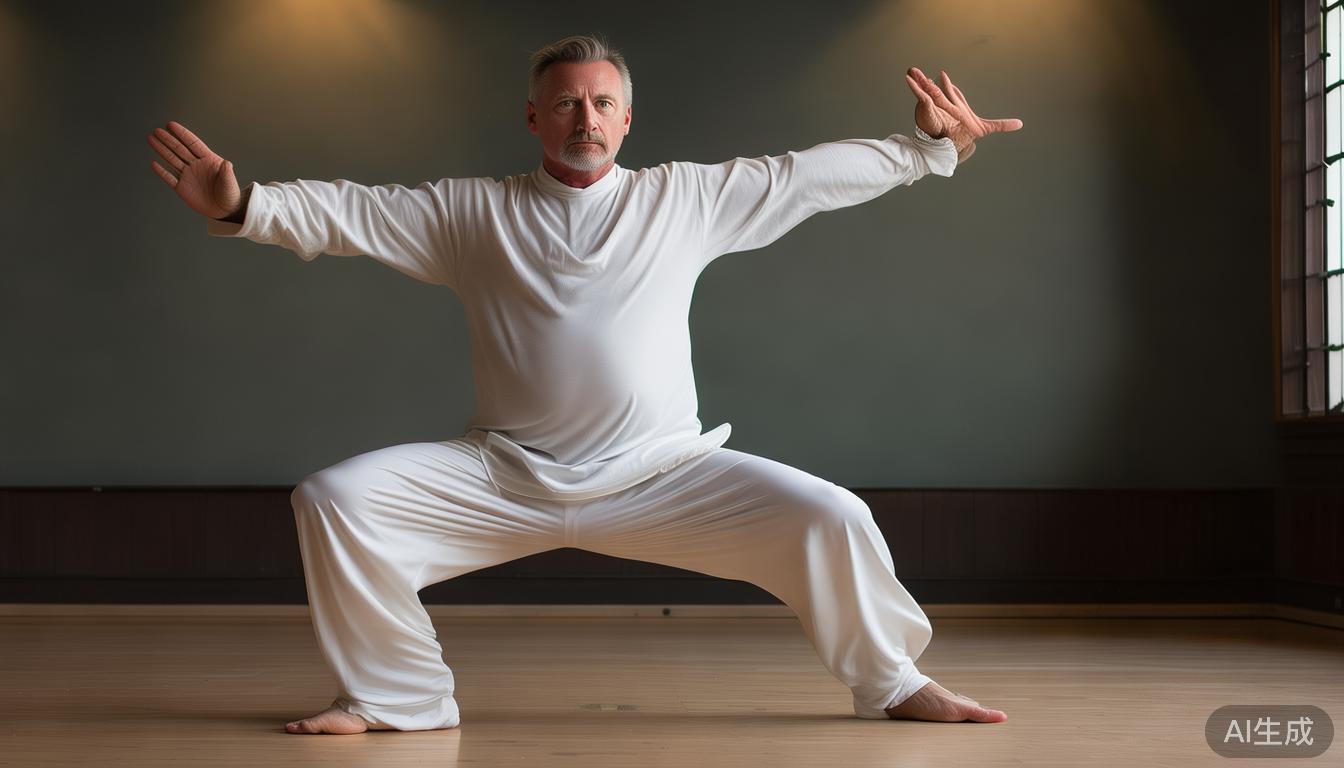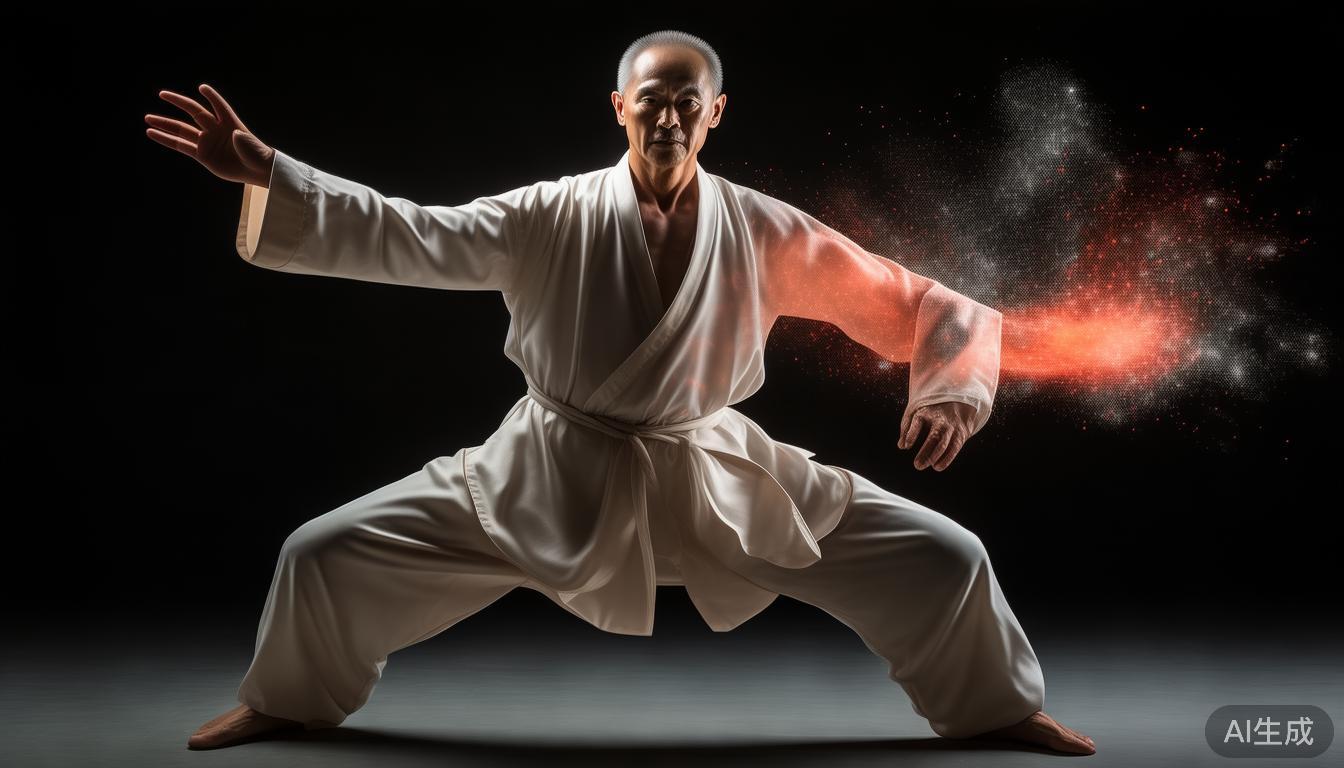The Secret Of Physical And Mental Balance: Eight Postures Of Tai Chi To Adjust The Breath And Explore The Mysteries Of The Body And Heart
An important way for me to maintain physical and mental balance for many years is to practice the Eight Postures of Tai Chi. This simple routine, which incorporates the essence of traditional Tai Chi, can help beginners establish a foundation and allow experienced people to deepen their understanding of the flow of breath. Each movement contains the wisdom of yin and yang harmony. Through slow and coherent rhythms, it guides us to re-understand our body and heart.
How to start and adjust the breath in the eight Tai Chi postures
Determine the starting position as the basis of the entire set of movements. Spread your feet to a state where they are naturally apart and the same width as your shoulders. Bend your knees slightly as if you are sitting on a high stool. Imagine that there is a silk thread above your head gently pulling upwards to promote a natural stretch of the spine. Slowly move your hands up from both sides of the body. Perform a lifting operation on the upper body, and when you press the palm downwards, cooperate with the exhalation movement, as if you are slowly pushing away the resistance in the air. The most critical thing at this stage is to ensure that breathing and movement can be synchronized. During the period of inhalation and exhalation, you can feel the energy rising from the soles of the feet to the fingertips.
The details of starting a movement are ignored by many beginners, but in fact, this is the key to smooth subsequent movements. I often remind students to move their wrists as gently as stroking running water, and their fingertips should always maintain a slightly numb feeling. When you can last three minutes in the rising position without sweating or panting, it means you have initially mastered the operation of internal energy.
How to coordinate cloud hand movements with breathing

Cloud Hand is a very representative dynamic meditation in Tai Chi. Inhale as the left hand draws an arc upward, and exhale with the lower right hand at regular intervals, forming a continuous loop like a cloud. It is especially important to note that the rotation of the waist will drive the arms, not just waving the arms. When I teach, I often emphasize the linkage relationship of "the waist is the axis and the arms are the wheels", which can effectively prevent stiffness of the shoulders and neck.
When actually practicing, you can look in the mirror to see if your shoulders and hips are in sync. When you become proficient in the movements, you can try to practice with your eyes closed and feel the flow of air through your skin. A sixty-year-old student once shared that after mastering Yun Shou, she never had an attack of frozen shoulder again, and this is precisely because the movements promote the circulation of qi and blood in the shoulder joints.
Why Curling Your Humerus Improves Balance
Seemingly simple, the step back movement essentially tests the coordination of the core muscles. When retreating, the forefoot touches the ground first, and the center of gravity slowly moves back as if it were on thin ice. Stretch your arms forward and backward, maintaining a rounded arc, as if you are holding an inflated balloon. I suggest students to practice at the joints of ceramic tiles and use linear reference objects to test the stability of their movements.
Rushing through the step back and causing the body to sway is a common mistake. Simply slow down the speed to three times the original speed ratio, and silently count the time for five seconds while supporting on one leg. After two weeks of intentional and targeted training, you will find that your knee joints are significantly more stable when stepping up and down the steps . This is the result of the external effects and considerable results of strengthening the quadriceps muscles under the action of the inverted humerus.
How to use clenching force to hold the bird's tail

This classic movement includes changes in the internal energy of pushing, including changes in internal energy of stroking, changes in internal energy of squeezing, and changes in internal energy of pressing. When pushing forward, imagine that there is heat flowing from your lower abdomen toward your palms. When you push back, it is like gathering invisible threads. The key point is to maintain flexible tension at the heel of the palm. Parkinson Tai Chi should not be completely straight or collapse. I often ask students to press the wall gently to practice Fajin and observe whether their elbows maintain the proper arc.
The palms of people who have truly mastered the force will naturally turn red. This is a manifestation of capillary dilation. It is recommended to soak your hands in warm water before and after practice. This can enhance the sensitivity of nerve endings. When you can continue to feel the warm feeling in your palms during movements, this indicates that the energy of the meridians has been initially activated.
In your experience of practicing the eight Tai Chi postures, which movement taught you the most significant physical and mental changes? You are welcome to share your experience in the comment area. If you feel that these methods are helpful to you, please click like to support so that more colleagues can see it.


